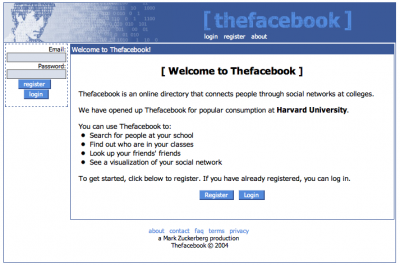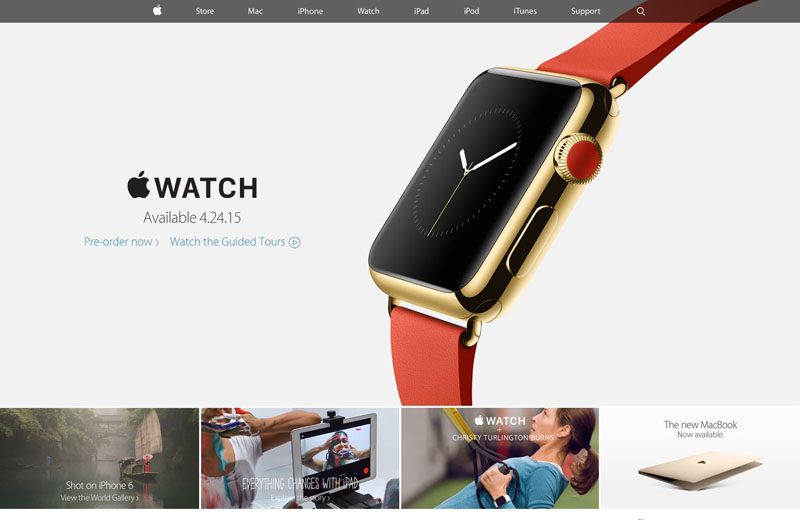
A Trip Through Time: Web Design
Have you ever wondered what the very first web page looked like? Or the first Google, Facebook, or YouTube page? Undoubtedly they all look modern and intuitive today, but where did it all begin? Let’s take a trip through time. So sit back, keep your arms and legs in the carriage at all times, and enjoy, as I take you on a trip in Crucial’s own Web Design Time Machine.
The Dark Ages
1989-1995

The inception period of web design was dark, literally, because web design started with black screens and monochrome text.
But the excitement starts now…
1989 – Tim Berners-Lee proposed a project that would later become known as the World Wide Web. It was born and completed throughout 1991-1993.
1990 – The birth of HTML (HyperText Markup Language), a coding language that can be read by web browsers to be translated into web pages.
1991 – The very first website is created by Tim Berners-Lee.
1991 – 1 Internet user + 1 active website
Eventually, there were many websites growing rapidly — containing mainly text-heavy pages and only a range of 16 colours supported.
1993 – 14 million Internet users + 130 active websites
1994 – The W3C (World Wide Web Consortium) is founded by Tim Berners-Lee to implement a set of standards for web design, so as to promote its evolution and ensure consistency.
1994 – Mosaic Communications releases the Mosaic Netscape browser, which breaks the mould by incorporating text with images and sounds, including background colours and tables. It spices up the boring text-heavy pages with the use of images and colours as well as the innovative “on-the-fly” loading — the web page loaded bit by bit. The browser is later renamed Netscape Navigator, as Mosaic Communications takes the name Netscape Communications.
1994 – Yahoo! launches, becoming one of the first popular search engines.
The Middle Ages
1995-1998
This era of the web involved the most important battle that in hindsight has changed the direction and evolution of web design: The Browser Wars. These “wars” were basically a competition by two giants of the market at the time, Netscape and Microsoft.
With new advancements in web design, there was an explosion of innovation, resulting in new and exciting possibilities for the World Wide Web. Pages became less text-reliant, with more web safe fonts and up to 256 web safe colours — which included the bright, visually-challenging colours. This unfortunately meant that some really ugly websites were born, and bright colours were abused.
Tables were discovered to have another use other than being just tables — they were used for formatting and structuring web pages, which W3C understood and consequently introduced CSS (see 1995-96).
Businesses and individuals eventually took advantage of the Internet through the use of advertisements — many of them garish and annoyingly flashy.
1994 – Amazon launches.
1995 – Microsoft releases Windows 95 and with it (the now hated but much loved) Internet Explorer. On this day, Comics Sans is born — COMIC SAAANS!
1995 – Auctionweb launches, and eventually becomes eBay, one of the largest e-Commerce companies.
1995-96 – Dynamic HTML is introduced, which is the collection of technologies to create interactive and animated websites. These technologies included: Javascript, one of today’s most famous dynamic programming language which implements interactive effects, Cascading Style Sheet (CSS), which is used to change the style, colour, and formatting of web pages, and Macromedia Flash (later to be acquired by Adobe) which is used to create animations or games that can be viewed in what became Abode Flash Player.
1996 – 77 million Internet users + 257 thousand active websites
The Renaissance
1998-2003
This was the rebirth of web design. While its Middle Ages introduced new technologies, its Renaissance era developed and explored these tools to create new trends and ideas — it made them into fine art.
A growing trend put emphasis less on text, but more on formatting (menus + navigation). Text was increasingly split throughout mini-pages, as they normally are now. Dark colours as well as “colour-blocks” introduce a slight steer away from bright, obnoxious colours.
1998 – Google launches, redefining and pioneering the Internet with its fast, reliable performance, intuitive design, and accuracy.
1999 – Microsoft essentially wins the browser wars as Netscape is acquired by AOL for US$10 billion. Before Netscape cedes, it releases the source code to its browser, and founds the Mozilla Organisation in 2003, which is now famous for its browser Firefox.
(Fun Fact Time: Mozilla has a mascot of a Godzilla-like lizard which represented the company’s goal of producing the browser that would be the “Mosaic Killer”).
1999 – 280 million Internet users + 3.1 million active websites
2001 – Wikipedia launches, yet to be known that it would become the world’s greatest free encyclopedia.
The Industrial Revolution
2003-2007
The term Web 2.0 essentially defined this era of web design, as it was epitomised by the increase in popularity of ourselves — user-based information, which includes social media sites, blogs, wikis, etc. This time was when the eventual top dogs of social media were founded.
There was an increasing emphasis on readability and functionality. People wanted to read what you had to say, and you had to make that readable, as well as functional and innovative.
In 2003, over half the Internet population are displaying 16.7 million colours, yet there is an increase in the use of whitespace and a decrease in bright colours, like neons.
Animation is widely put to use on many websites, with a trend of introduction pages. Long-scrolling web pages also become a part of the trends.
Skeumorphism becomes popular as an entertaining effect… Skeuwhatism? — it is the art of making things appear like their real-life counterparts, e.g. digital camera shutter sound, or page-turning animations.
2003 – 778 million Internet users + 40 million active websites
2003 – WordPress is launched and becomes one of the most used open-source blogging and content management system.
2004 – Facebook launches initially as Thefacebook. Myspace is also launched.
2005 – YouTube launches, and quickly epitomises video-streaming and sharing on the Internet. It is bought by Google in 2006 for $1.65 US billion, and has since continued to improve its video-streaming services.
2005 – 1 billion Internet users + 64 million active websites
The Digital Age
2007-Present
With the introduction of smartphones, the design trends of readability and functionality skyrocketed way beyond expectations, which saw more people accessing the Internet via their mobile phones, rather than on desktop computers. Responsive mobile web design has become one of the most important aspects of any web designer’s work, as according to statistica.com, 122 million people owned smartphones globally in 2007 alone — it is now estimated to be 2 billion by the end of 2016.
This age sees influential trends such as flat design, which is a minimalistic approach with simple elements — including minimalism and typography, the use of clear and readable text.
Another trend is parallax, which according to Wikipedia, is “a displacement or difference in the apparent position of an object viewed along two different lines of sight”. You might remember classic videogames like Super Mario World, where the background landscape moved slower than the foreground landscape — this is an example of parallax showing distance.
In web design, parallax is used mainly through what’s called parallax scrolling — some great examples are Sony’s Be Moved web page, Intacto’s 10 Years web page, and Make Your Money Matter.
2007 – Apple launches the first iPhone (yeah remember that old chunky thing?), that includes Safari, the world’s first mobile web browser.
2008 – Google Chrome launches and eventually explodes into worldwide popularity with its minimalistic, fast, and easy-to-use design.
2010 – 2 billion Internet users + 206 million active websites
2014 – The Internet is 25 years old.
2014 – HTML5 is released by W3C as the fifth and presumed final build of the HTML standard.
Here at the end of the Web Design Time Machine Tour, we arrive at the final destination:
Present day – In the past ten years the amount of Internet users is tripled, with the first billion in 2005, second billion in 2010, and third billion in 2014.
Google Chrome is the Internet browser king with 62.5% of users, and Firefox sits behind with 22.9%, while Internet Explorer, Safari, and Opera lay at the bottom of the most used browsers, according to W3Schools.
(Fun Fact Time: Internet Explorer will only be an optional application to Windows 10 users, as its substitute codenamed Spartan rolls in).
Present – roughly 3.1 billion Internet users + 926 million active websites





Pingback: When Size Really Does Matter… | We Are Life Design Blog()